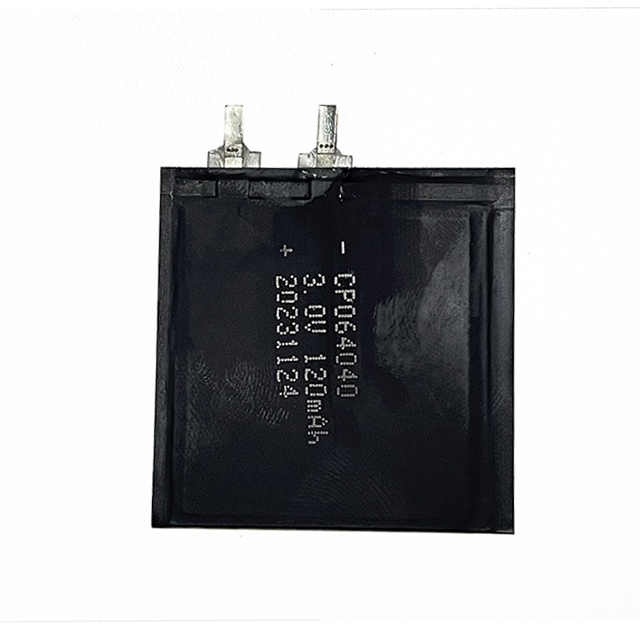Breakthrough in primary lithium batteries: ultra-thin Li-MNO2 batteries or CP pouch cells
Breakthrough in primary lithium batteries: ultra-thin Li-MNO2 batteries or CP pouch cells

In the ever-evolving landscape of battery technology, lithium batteries have emerged as a frontrunner in providing reliable and efficient energy storage solutions. From primary lithium batteries to advanced Li-MnO2 batteries, CP pouch cells, 9V lithium batteries, ultrathin batteries, and those with long operating lives, this article explores the various types, advancements, and applications of lithium batteries.
1. Introduction to Lithium Batteries
Lithium batteries, first introduced in the early 1970s, have revolutionized the battery industry. Their high energy density, low self-discharge rate, and relatively lightweight design have made them a preferred choice for a wide range of applications. Lithium batteries can be broadly classified into two categories: primary (non-rechargeable) and secondary (rechargeable).
2. Primary Lithium Batteries
Primary lithium batteries, also known as non-rechargeable lithium batteries, are disposable power sources that cannot be recharged once depleted. They are typically used in applications where long shelf life and high energy density are crucial. These batteries often contain a lithium metal anode and a manganese dioxide (MnO2) or other suitable cathode material. The electrolyte, usually a non-aqueous liquid or solid, facilitates the movement of lithium ions between the anode and cathode during discharge.
Primary lithium batteries are commonly found in high-end consumer electronics, medical devices, and military applications. Their high energy density allows for smaller and lighter batteries, while their long shelf life ensures reliability even in storage for extended periods.
3. Li-MnO2 Batteries
Li-MnO2 batteries are a subclass of primary lithium batteries that utilize manganese dioxide (MnO2) as the cathode material. These batteries offer several advantages over other primary lithium battery chemistries, including higher voltage, better rate performance, and improved safety.
Li-MnO2 batteries are often used in applications requiring high pulse currents, such as in remote controls, smoke detectors, and other portable electronics. Their high voltage and excellent rate performance allow them to provide consistent and reliable power even under heavy load conditions.
4. CP Pouch Cells
CP pouch cells, also known as lithium-ion polymer batteries or LiPo batteries, are a type of rechargeable lithium battery that utilizes a polymer electrolyte instead of a liquid electrolyte. This polymer electrolyte is contained within a flexible pouch-like enclosure, giving CP pouch cells their unique form factor.
CP pouch cells offer several benefits compared to traditional lithium-ion batteries. Their flexible design allows for thinner and lighter batteries that can be tailored to specific shapes and sizes. Additionally, the polymer electrolyte provides improved safety and reduced risk of leakage or explosion. CP pouch cells are commonly found in consumer electronics, such as smartphones and tablets, as well as in drones, electric vehicles, and other applications where lightweight and flexible batteries are desired.
5. 9V Lithium Battery
The 9V lithium battery, also known as the PP3 battery or 6F22 battery, is a small, cylindrical battery that provides 9 volts of direct current. It is a primary lithium battery that utilizes a lithium thionyl chloride (Li-SOCl2) chemistry, which offers high energy density and long shelf life.
9V lithium batteries are commonly used in various household and industrial applications, including smoke detectors, transistor radios, and other small electronic devices. Their compact size and high voltage make them an ideal power source for these devices, while their long shelf life ensures reliable performance even in standby mode.
Ultrathin batteries are a type of battery designed to achieve extremely thin profiles. These batteries are often achieved through the use of thin film technology, which allows for the fabrication of batteries with thicknesses measured in micrometers.
Ultrathin batteries find applications in devices where space is limited and weight is crucial. For example, they are commonly used in wearable electronics, such as smartwatches and fitness trackers, as well as in implantable medical devices and other miniaturized systems. The thin and lightweight design of ultrathin batteries enables the development of sleeker and more portable devices.
7. Long Operating Life
Lithium batteries, in general, are known for their long operating lives. This is due to their high energy density, low self-discharge rate, and ability to undergo numerous charge/discharge cycles (in the case of secondary batteries).
For primary lithium batteries, the operating life is determined by the total amount of energy stored within the battery. Since these batteries are non-rechargeable, their lifespan is limited to the initial charge. However, due to their high energy density and low self-discharge rate, primary lithium batteries can often last for several years or even decades in standby mode.





